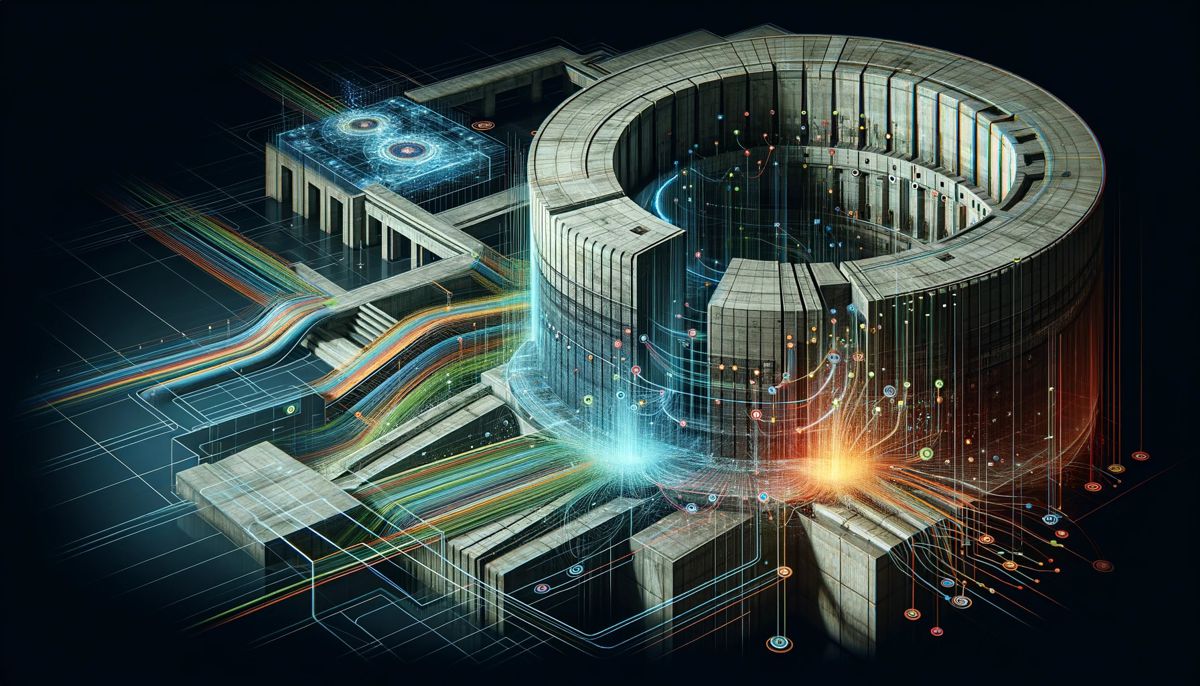AI boosts resolution of Electrical Impedance Tomography for Structural Imaging
Electrical impedance tomography (EIT) is a non-destructive imaging technique used to visualize the interior of materials. In this method, an electric current is injected between two electrodes, creating an electric field, and other electrodes measure distortions caused by the presence of foreign objects inside the material.
Compared to other imaging methods, such as X-ray imaging, computed tomography, and magnetic resonance imaging, EIT has the advantages of being low cost and less cumbersome as it does not require large magnets or radiation. Therefore, it holds great potential as a non-destructive structural health monitoring method for intricate and complicated cement-based building materials.
The challenge with EIT, however, lies in accurately reconstructing the obtained information as images. Algorithms like one-step Gauss-Newton, primal dual interior point method, and iterative Gauss-Newton (IGN) are typically used for this purpose. However, due to the nature of EIT, the solutions obtained using the above mathematical methods contain some inaccuracies. Recently, to overcome this issue, machine learning algorithms such as one-dimensional convolutional neural networks (1D-CNN) have been used. However, the weakness of these algorithms lies in handling previously unseen data, which reduces their effectiveness.
To address the above challenges, Associate Professor Takashi Ikuno from the Tokyo University of Science (TUS), along with his collaborators, Mr. Keiya Minakawa, Mr. Keigo Ohta, and Mr. Hiroaki Komatsu from TUS and Associate Professor Tomoko Fukuyama from Ritsumeikan University, all from Japan, has now developed a novel hybrid EIT approach, called AND, which combines the benefits of IGN and 1D-CNN. When the cross-sectional area ratio of the foreign body to the sample was 5×10-4 (very small foreign body), the present approach reduced the size error to less than 1/6th of that of the conventional EIT method. Their findings were published in Volume 14, Issue 1 of the journal AIP Advances on 12 January 2024.

“From the perspective of disaster prevention, deterioration analysis of existing structures built during the period of high economic growth is important. Our new method can improve the application of EIT as a non-destructive testing method and contribute to preventing building collapses,” says Dr. Ikuno.
The innovative AND method performs 2D logical operations on multiple images obtained from EIT to detect small foreign objects inside materials. In their study, the team tested their AND method on actual cement samples using both simulation and experimental data, comparing its performance to that of IGN and 1D-CNN methods in both scenarios. When using simulation data, they found that the IGN method led to large errors in the reconstructed images as the size of foreign objects decreased. In contrast, the AND method reconstructed the position and size of the foreign objects more accurately than both IGN and 1D-CNN.
Moreover, with experimental data, the researchers found that both the proposed AND method and the 1D-CNN method were more accurate than IGN. In addition, they also identified another method to improve the accuracy of EIT. Dr. Ikuno explains: “One approach to improve EIT is to change the current injection pattern. By changing the spatial distribution of the electric field and by combining the present approach with other NDE techniques, the resolution for detecting the size and position of foreign particles can be improved.” This is the focus of their future research.
“The proposed EIT reconstruction method, while inferior to other NDEs in terms of resolution, has advantages in terms of equipment size and cost. It can lead to improved non-destructive foreign object detection, enabling easier and more regular assessment of building health. It could also be deployed for rapid safety screening after an earthquake or explosion. Furthermore, it is expected to be easy to train inspectors and personnel to use this technology,” concludes Dr. Ikuno, emphasizing the importance of the innovation.
Overall, these findings mark a significant step forward in EIT technology, which could become an important detection technique for preventing building collapse in the future.




















